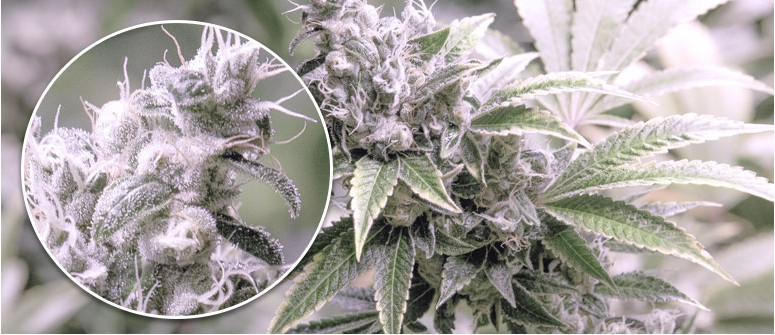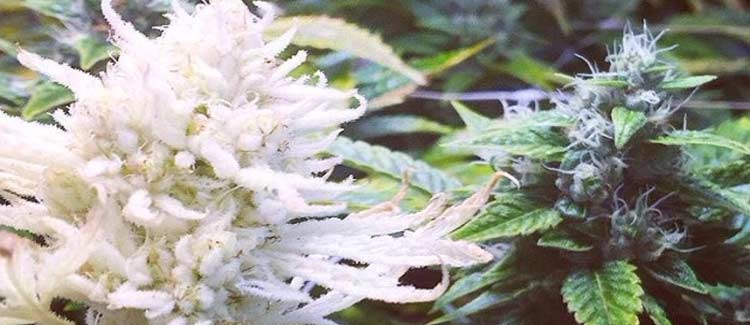Albino weed - real or myth?

There are too many marijuana myths to possibly count. One such legend involves the elusive albino cannabis. But is this a real phenomenon, or the result of some basic photo editing skills? Here's the breakdown on albino weed.
Weed plants are known to feature an array of colors, although the classic dark to light green hue immediately comes to mind. All the same, some strains boast other dazzling colors like red, orange, and purple.
There are also many strains that have a name with the word “white” in them. White Widow, White Lemon, Jack White, just to name a few, but have you ever heard of “albino marijuana”?
They are supposedly rare, but although for many the question has persisted as to whether or not the rare white cannabis really exists, it turns out that some people claim to have seen this fabled albino marijuana.
Given that most people, including us, have only seen this breed of weed on pictures on the internet, many assume the phenomenon to be purely the result of a story that got blown out of believable proportion, fiction and/or Photoshop; and indeed, this might be true.
But the question really is: if albino weed really does exist, what advantages, if any, would these plants have to offer growers and consumers?
WHAT IS ALBINISM?
Most of us are aware of the condition known as albinism in human beings and other creatures in the animal kingdom, such as albino tigers, crocodiles and a very creepy albino snake. But what about the plant kingdom? What causes the condition to occur in plants?
According to Wiki, albinism in plants is associated with the complete or partial loss of chlorophyll pigments, causing some plants to appear white from the stems to the leaves.
In some cases, the plant will appear only partially white; and in either case, it can be pleasing to the eye. Unfortunately, despite the aesthetic, albino plants do not grow well.
Due to their significantly reduced amounts of chlorophyll, the plant loses its ability to adequately photosynthesize. This means the plant cannot produce the sugars needed to supply energy for it to grow and thrive.
CHLOROSIS AND LIGHT DAMAGE VS GENETIC ALBINISM
An important consideration to remember is that not all plants become albino due to a genetic mutation.
Chlorosis is a condition that is not that rare amongst plants and is usually caused by not getting enough nutrients to create all the chlorophyll they need. This then results in plants that appear partially white and yellowish.
In some cases, the variation is caused by plants being placed too close to high-intensity lamps.
This proximity may also cause plants to lose their color due to the degradation of chlorophyll.
ALBINO WEED WOULD PROBABLY BE LOW IN CANNABINOIDS

Besides some nice pictures, we could not find any information about people reporting having actually grown or smoked albino weed, but probably the most severe issue with albino cannabis would be its inability to obtain much-needed nutrients to produce even the smallest of yields.
Furthermore, the buds themselves would likely be very low in cannabinoid concentration. That means the recreational and medicinal value of this type of plant would unfortunately go way down.
IN CONCLUSION
The myth of albino weed is, in fact, also for us still a myth. These pure white beauties could exist and occur naturally; but until either Jorge Cervantes shows us one, and we have smoked it ourselves, we can't tell you much more than hypothetical information.
But, whether by natural means or overexposure of high-intensity lighting, albino weed makes it high up our to-smoke list and if you do find one, please let us know!




